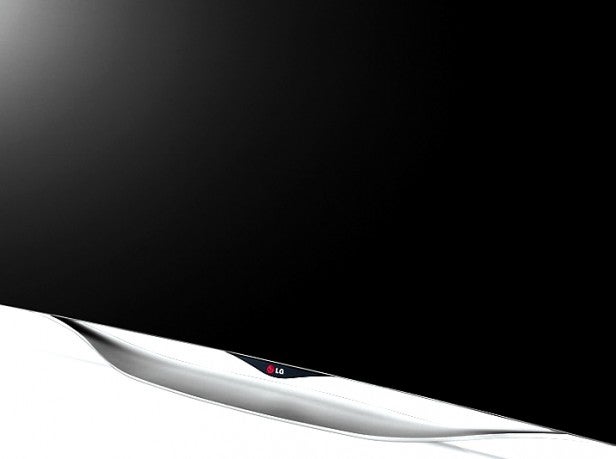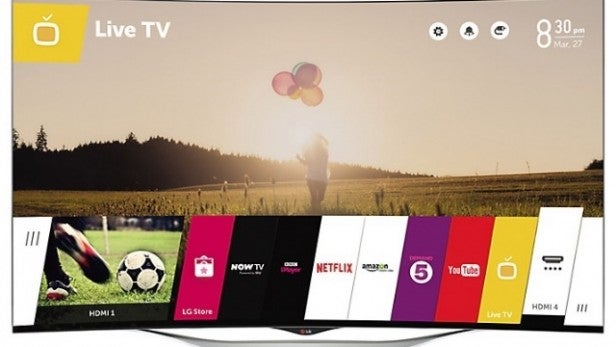LG 55EC930V Review - Picture Quality Review
Picture Quality
It may not be 4K, but OLED tech makes this an awesome HD TV

Sections
- Page 1 LG 55EC930V Review
- Page 2 Picture Quality Review
- Page 3 3D, Sound and Verdict Review
LG 55EC930V – Picture Quality
It took much longer than normal for us to start penning this section of the 55EC930V review, for the simple reason that we just couldn’t tear ourselves away from the sheer pleasure of seeing our favourite test films being delivered – for the most part – so ground-breakingly brilliantly.
Not surprisingly, based on all our past experience of OLED technology, the 55EC930V’s star attraction is its black-level response, which is as close to perfect as we’ve ever seen from a TV. Where part of a picture is supposed to look black on the 55EC930V, that’s exactly how it looks: deeply, richly, convincingly black, without the faintest hint of greyness or milkiness that you’ll see to some degree with all other types of flat TV technology. Even high-end plasmas.
Given that we believe black-level response to be the foundation point of great picture quality, hopefully now you can understand why we tend to get a bit giddy at the mere mention of OLED technology.
It’s not just the flawless depth of the 55EC930V’s black levels that blew us away during dark scenes, either. Also mesmerising is the amount of shadow detail you see in dark scenes thanks to the way every single pixel in the image can enjoy its own brightness level, independent of the pixels around it.
Routinely, for scene after glorious scene, we saw details and subtleties in dark scenes on the 55EC930V that we never normally get to see on a flat TV. Only Panasonic’s VT65 and ZT65 plasma TVs can claim to have delivered the same sort of detail density during dark scenes – yet even those mighty plasma heroes couldn’t deliver black colours as inky and pure (noiseless) as those you get from the 55EC930V.
Another way of putting this shadow detail prowess is to say that the 55EC930V doesn’t just ‘do black’. It also does a seemingly infinitely subtle gradations in those near-black parts of the picture that catch LCD TVs out so often.
There’s still more good news to report about the 55EC930V’s amazing contrast work, too. The panel’s self-emissive nature makes it completely free of the clouding and blooming problems so common with LCD TVs. Furthermore, so long as you avoid the dynamic contrast tool, the 55EC930V’s imperious black levels are achieved without so much as a hint of brightness instability.
Sorry if we’re going on about the 55EC930V’s black-level response a bit, but it really is groundbreaking stuff in just the area where we most wanted to see ground broken. If you see what we mean.
Colours, too, are spectacular on the 55EC930V. Every shade and tone explodes off the screen with gorgeous intensity – even during dark scenes, thanks to the way the TV doesn’t need to compromise the overall luminance of the image when dealing with predominantly dark content. Peak colours can look even more intense, in fact, than they do on wide colour gamut LCD TVs such as Sony’s X9005B and Samsung’s HU8500 models.
In fact, the colour punch is so strong that it can be a bit unforgiving of the sort of noise you can get with standard definition broadcasts, making us reach for the noise reduction more with such content than we normally might. Also, the sheer amount of colour the 55EC930V pulls out of dark scenes initially takes some acclimatising to, as you’re so unused to seeing it. Though after a while, of course, it’s something you hate having to live without.
The 55EC930V’s HD pictures look stunningly detailed for a non-4K screen, too, especially with all that shadow detail and subtle gradation in play. There is, it has to be said, more resolution loss over motion than you’d get with a plasma screen, but you can reduce the impact of this via the TruMotion processing without it causing too many unwanted side effects as long as you follow our earlier setup advice.

One last superb and important achievement of the 55EC930V is the way its screen filters away reflections. This means images still look spectacularly contrast-rich and vibrant even in bright room conditions – something no plasma screen could never claim. The suppression of reflections is also important with regard to the 55EC930V’s curve, since one of the biggest problems we usually have with curved screens is the way they tend to distort onscreen reflections across the screen.
While in most key ways the 55EC930V is a mind-blowing demonstration of genuine next-generation TV thrills, though, it isn’t wholly without flaws. For starters, the TV for some reason doesn’t seem to give you full control over either its noise-reduction or dynamic contrast features. For instance, when watching a film with a grainy finish it seemed as if the grain was being ‘ordered’ into a slight ‘net curtain’ effect – classic noise reduction behaviour. Yet a quick check confirmed that the NR was switched off.
And occasionally, during extremely dark sequences, we noticed the sort of jump in image brightness that we’d usually associate with a dynamic contrast system, even though the dynamic contrast system was also definitely turned off. Strange.
Occasionally the screen slightly over-emphasises small points of brightness in an image – like reflections in people’s eyes – perhaps again because of the same apparent residual dynamic contrast system. We should stress here, too, that you really shouldn’t use the actual Dynamic Contrast mode you can access in the TV’s menus, for this is completely unnecessary given the OLED screen’s native contrast talents, and can cause some distracting brightness ‘jumps’ even on its lowest setting.
We also spotted the occasional colour oddity during our time with the 55EC930V – such as a slight infusion of mauve into some very dark picture areas – which we couldn’t wholly fix via the rather finicky calibration system.

As with all curved screens the picture’s geometry can start to look a bit off if you have to watch from more than around 30 degrees of axis, and we sometimes spotted faint horizontal line structure over very bright parts of the picture presumably caused by the passive 3D filter applied to the screen.
The 55EC930V’s images are not actually all that bright, either, if you really get down to it – but you don’t really feel this thanks to the TV’s incredible contrast and dynamic range.
Finally, while the 55EC930V’s images are sharp, they never managed to make us forget that they’re not 4K.
It’s important to stress before moving on, though, that the 55EC930V’s black-level and colour prowess are so overwhelmingly good that it’s they which define the experience of watching the 55EC930V, not the niggles.
How we test televisions
We test every TV we review thoroughly over an extended period of time. We use industry standard tests to compare features properly. We’ll always tell you what we find. We never, ever, accept money to review a product.

